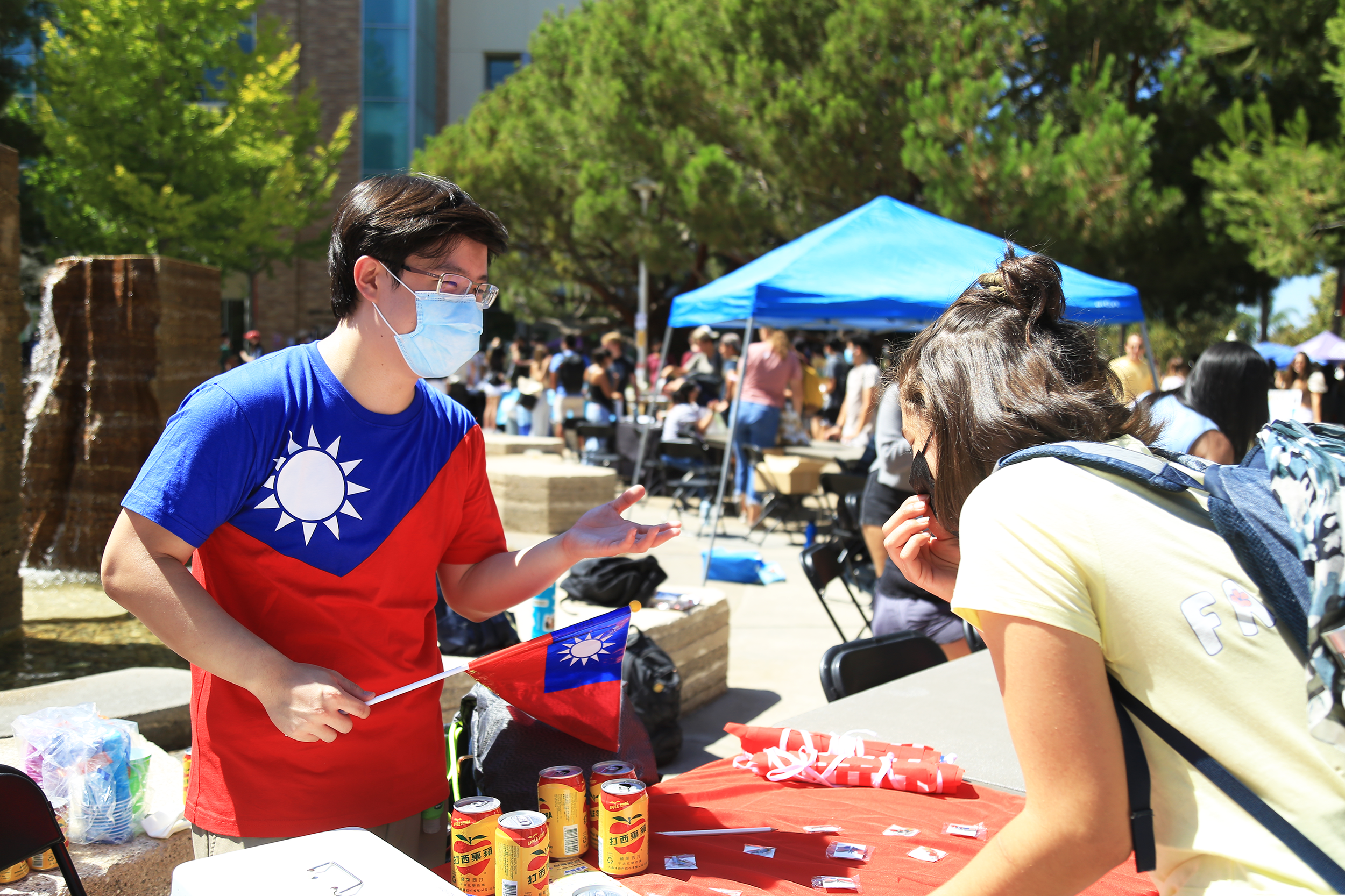Taiwanese-American Student Association celebrates Mid-Autumn Festival
Jeff Pai, the president of Chapman’s Taiwanese-American Student Association (TASA), collaborates with TASA members for the Sept. 21 Mid-Autumn Festival. RYAN CARTEE, Staff Photographer
Senior business administration major Kyle Ng has plenty of fond memories to look back on when the Mid-Autumn Festival rolls around each year. In Taiwanese culture, the celebration marks a jubilant flurry of culinary traditions and group festivities.
“I celebrate every year with my whole extended family eating Mooncakes and Pomelo, lighting lanterns and admiring the moon,” Ng told The Panther.
Today, Ng celebrates the holiday in person with the campus community, corresponding with the date the event is observed in Taiwan, as Chapman’s Taiwanese-American Student Association (TASA) hosts its annual celebration of the Mid-Autumn Festival at the Study Abroad Fair in the Attallah Piazza.
TASA president Jeff Pai, a junior accounting major, said the club — which was founded on campus in 2018 — celebrates and promotes Taiwanese culture among students of the shared heritage while also striving to educate those who are not as familiar with the culture through various events like the Mid-Autumn Festival.
"The Mid-Autumn Festival, (also known as the) Moon Festival, is celebrated by East and Southeast Asians around the world," Pai wrote in an email to The Panther. "This is the second most important holiday behind Lunar New Year. (The Mid-Autumn Festival) is on the 15th (of) the 8th month of the Lunar Calendar … when the moon is the brightest and fullest. This day typically correlates with mid-September to early October."
This celebration will be TASA’s fourth time hosting the festival.
There are many different legends associated with the Mid-Autumn Festival, however, “Chang’e Flying to the Moon” is the most widely told story. According to the legend, Chang’e was the wife of Houyi, a highly skilled archer. There were 10 suns at this time, and Houyi was tasked by the emperor to shoot down nine of them, because the suns burned the crops. After succeeding, Houyi received the Elixir of Immortality.
Knowing Houyi would become a tyrant, Chang’e sacrificed herself and the Elixir. She floated up to the Moon with her bunny companion, where they have remained ever since. Every year, mooncakes are part of the offerings to Chang’e to thank her for her sacrifice.
Additionally, the day is particularly auspicious for marriages, as legend states the moon goddess will bless couples with “conjugal bliss.”
According to Pai, the most notable activities for this day are making lanterns and displaying these illuminated orbs on towers. It’s typical for individuals celebrating the festival to write what Pai called “well wishes” on the lanterns before sending them floating up into the sky.
The lanterns generally feature very bright colors like red, green, yellow or orange. White is never used, since it is associated with funerals. The lanterns are meant to show the way to prosperity and good fortune, Pai said.
Mooncakes are a very traditional dessert served at this time. In Taiwan, these dishes are usually round with edges, sometimes resembling a flower, to symbolize completeness and reunion within the family. There are many types of filling to choose from: wu ren (mixed nuts), red bean, white lotus, salted egg yolk, minced pork, green tea, fruits, yam — and as a more modern addition — boba.
Though delicate in presentation, these pastries have an elusive history: when the Chinese were fighting the Mongols, hidden messages were put into the filling of the mooncakes and sent from camp to camp. This was considered one of the most effective methods of communication.
“For anyone looking to learn more about Taiwanese culture, (TASA) welcomes them to come visit our booth to … have a fun time eating great food and playing games.” Pai said. “It always makes us feel good when we see the surprise reaction and joy of people who may have been unfamiliar (with the) culture, but who had a great time trying our foods and learning about what we are so proud of.”

